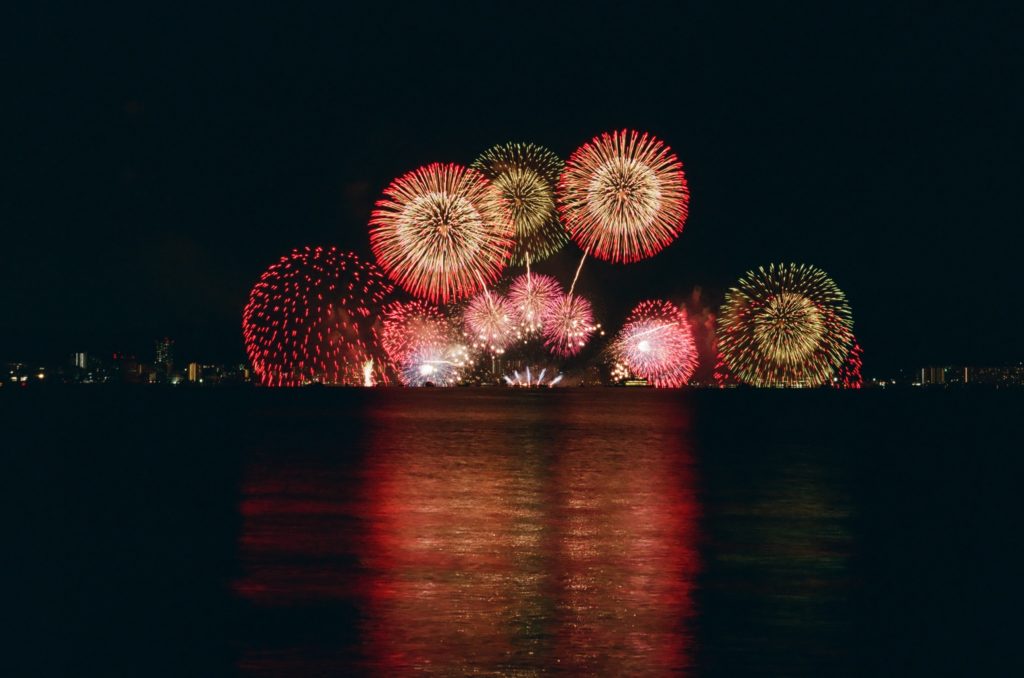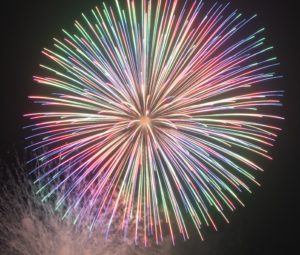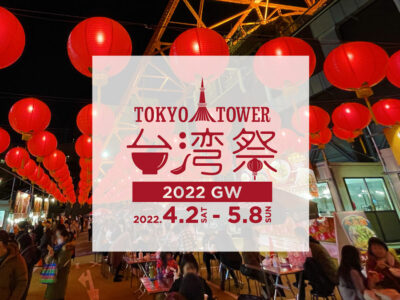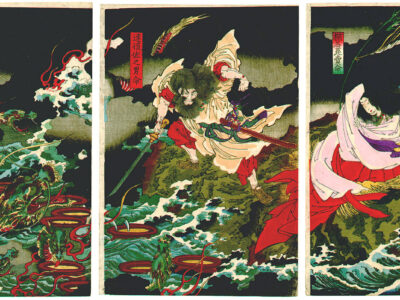Summer in Japan is the season of yukata 浴衣, matsuri 祭り but also fireworks which are called hanabi 花火 (literally, fire flowers).

A brief history of fireworks in Japan
 Fireworks arrived in Japan around the 16th centurye century. Shogun* Ieyasu Tokugawa, a great admirer of the fire flower spectacle, played a major role in its perpetuation on the archipelago.
Fireworks arrived in Japan around the 16th centurye century. Shogun* Ieyasu Tokugawa, a great admirer of the fire flower spectacle, played a major role in its perpetuation on the archipelago.
A few gunpowder shops specializing in pyrotechnics appeared, but the shogunate forbade the organization of shows anywhere other than on the Sumida River due to the dangers and accidents. These prohibitions did not prevent the establishment of pyrotechnician houses and fireworks schools, which still exist today. During the Meiji era (1868-1912), the reopening of the country to foreigners allowed the importation of new compounds and colors. This sparked a true craze for hanabi (花火). which seized the country and has never stopped since (source: https://blog.courrierinternational.com/conversations-avec-le-japon/2020/08/06/hanabi-la-tradition-des-feux-dartifice-au-japon/).
The first public fireworks display took place in 1733 in the Ryogoku suburb of Tokyo. Known as Ryogoku Hanabi, it marked the beginning of the summer hanabi tradition.
Hanabi (花火) today
 Originally, these fireworks were used in ceremonies to appease the spirits of those who had died from illness or famine. Over time, this ritual function faded and eventually disappeared. Hanabi (花火) became a popular spectacle whose scale only continued to grow.
Originally, these fireworks were used in ceremonies to appease the spirits of those who had died from illness or famine. Over time, this ritual function faded and eventually disappeared. Hanabi (花火) became a popular spectacle whose scale only continued to grow.
Today, some hanabi 花火 are so popular (and spectacular!) that they attract several hundred thousand people.
This year again, COVID has put a stop to these festivities, but if you wish to attend the famous Japanese hanabi (花火) when you visit Tokyo, we recommend:
- Jingu Gaien Hanabi Taikai, very close to our school
- The Sumida River Hanabi Taikai, one of the most impressive, with some 22,000 fireworks used!
- The Koto Hanabi Taikai, more intimate, with a unique experience because the fireworks launch is very close
Please note: keep in mind that the Japanese (like tourists!) love these shows. You'll need to factor in the crowds, both on public transport and at the venues. And because in Japan, they don't do things by halves, be aware that shows often last over an hour, sometimes even up to two hours! Come prepared!
* The term shogun means "general"; it is an abbreviation of seiitaishōgun (征夷大将軍), which can be translated as "great general who pacified the barbarians." However, after it was bestowed upon Minamoto no Yoritomo, it became a title often indicating the de facto ruler of Japan (military dictator), even though the emperor remained the de jure ruler (in a sense, the guardian of traditions). The title of seii taishōgun was subsequently abandoned during the 19th-century constitution.e century of the kazoku, that is to say, of the Japanese nobility.
Source : https://fr.wikipedia.org/wiki/Shogun


![[Japon Pratique] Le JR Wide Pass vous ouvre les portes du Kanto !](https://espaceprof.com/wp-content/uploads/2022/04/shinkan-400x300.jpg)
